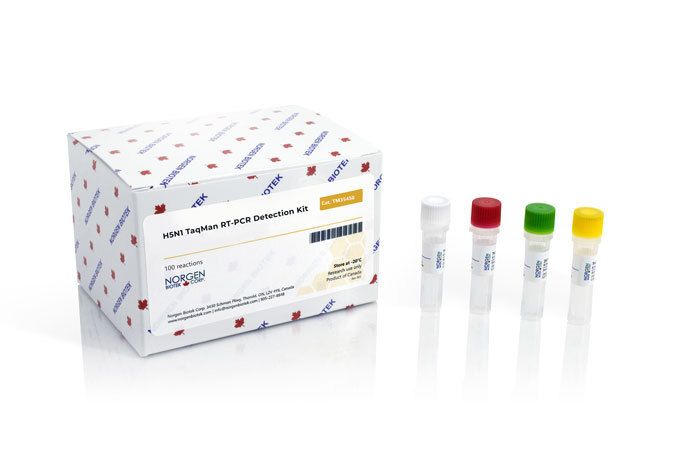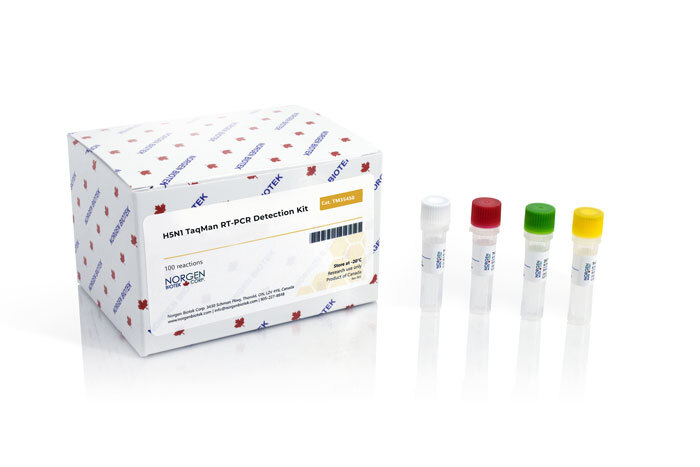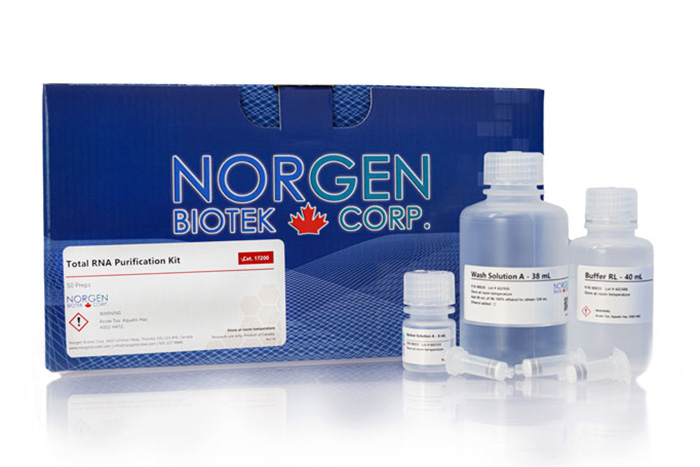H5N1 TaqMan RT-PCR Detection Kits

For research use only and NOT intended for in vitro diagnostics.
H5N1 TaqMan RT-PCR Detection Kits
Register today to receive an exclusive 15% off* on your first order.
Features and Benefits
- Detection kits for H5N1
- Available in TaqMan format for analysis
Influenza virus infection of birds, humans and other animals is a major public health problem worldwide. Influenza viruses are classified as either type A, B or C based on differences in their nucleoproteins and matrix proteins. The type A viruses are the most virulent human pathogens among the three influenza types and cause the most severe disease and epidemics. The different types can be further classified into subtypes based on antigenic differences in two surface glycoproteins; hemagglutinin and neuroamidase. All known subtypes of influenza A can be found in birds (H1-H16, N1-N9), while a limited number of the subtypes have been found in humans (H1-H3, N1 and N2). However, over the past few years, various subtypes of Influenza A viruses, including H5N1, have been reported to infect humans (WHO, 2006). In addition, the coexistence of human influenza viruses and avian influenza viruses may provide an opportunity for genetic material to be exchanged between these viruses. This could potentially create a new virulent influenza strain that is easily transmissible and lethal to humans (Food Safety Research Information Office, 2006). Thus, there is the need for sensitive diagnostic tests to allow for the rapid and early detection of these H5 influenza virus infections, to help reduce the risk of epidemics or pandemics in both animals and humans.
Click to expand options
- Ready to use format, including Master Mix for the target and PCR control to monitor for PCR inhibition and validate the quality
- Specific Primer and Probe mix for the pathogen/virus/viroid of interest
- Primer and Probe mix
- Positive and negative control to confirm the integrity of the kit reagents
- Specific Primer/Probe mix and Positive Control for the pathogen/virus/viroid of interest
- Nuclease-free water
- Can be used together with Norgen’s RT-PCR Master Mix (#28113) or customer supplied master mix
For research use only and NOT intended for in vitro diagnostics.
Details
Supporting Data
TaqMan PCR Kit - Figure 1. Example of TaqMan One-step RT-PCR Positive result. Both PCR signals above the baseline from FAM and HEX channel indicate the successful PCR.
TaqMan PCR Kit - Figure 2. Example of TaqMan One-step RT-PCR Negative result. No target RNA was detected in FAM channel but amplification signal from HEX indicates the successful PCR.
TaqMan PCR Kit - Figure 3. Example of TaqMan one-step RT-PCR inhibition result. No signal from both FAM and HEX channel was detected. It is suggested to repeat the sample preparation using recommended kit for RNA purification.
Storage Conditions and Product Stability
All kit components can be stored for 1 year after the date of production without showing any reduction in performance.
All kit components should be stored at -20°C upon arrival. Repeated thawing and freezing (> 2 x) of the Master Mix and Positive Control should be avoided, as this may affect the performance of the assay. If the reagents are to be used only intermittently, they should be frozen in aliquots.
| Component | Cat. TM35450 (100 preps) | Cat. TM35410 (100 preps) |
|---|---|---|
| MDx TaqMan 2X PCR Master Mix | 2 x 700 μL | - |
| H5N1 Primer & Probe Mix | 280 μL | 280 μL |
| H5N1 Positive Control | 150 μL | 150 μL |
| Nuclease-Free Water (Negative Control) | 1.25 mL | 1.25 mL |
| Product Insert | 1 | 1 |



